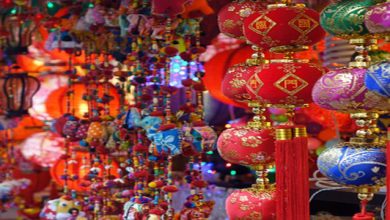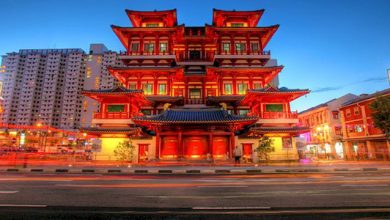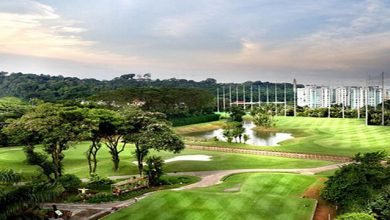The People of Singapore
The strategic location of Singapore is one of the factors why the country has a multicultural society. In order to ensure peace and harmony among the numerous religious and ethnic groups the government of Singapore gives emphasis on racial harmony in all aspect of the society- education, housing and military.
Before Sir Stamford Raffles established the British trading post in Singapore, the country was populated by less than two hundred Malays. In 1819 after Raffles took possession of Singapore for Britain the island became a thriving free port, immigrant settlers from China, India, Indonesian Islands and Malay Peninsula soon came. Within five years after the establishment of the free port the country’s population had risen to more than ten thousand people. After twenty-five years of the foundation the country population was dominated by Chinese immigrants.
The Malays are the first inhabitants of Singapore and the second largest ethnic group in the country. The Malays are generally of mixed descents. Originally, the local Malays came from aboriginal Orang Laut that dwells along the Singapore River, and the other coastal Malay groups that have intermarried with non-Malays and mostly are non-Malay stocks. The modern Malays of Singapore has been closely identified with their Malay ancestry.
Chinese have formed the majority of Singapore’s population since the colonial period. Majority of the Chinese living in the country are from the southern Fukian province, and from Guangdong Province. Chinese immigrants began to move to Singapore during the 19th and 20th century to escape the conflict and poverty in China. The Chinese can be classified into several ethnic subgroups namely – Cantonese, Hainanese, Hakkas, Hokkiens, Teochew and others. Each group has their own dialects which mostly uncommon to one another. Thus to unify the Chinese society the government came up with the Speak Mandarin Campaign.
Chinese Singaporeans are descendants of Chinese immigrants or born in Singapore and attained a citizenship or a permanent residence status. They showed the widest range of class, educational and occupational status. The Chinese society in Singapore is considered to be one with a high degree of social mobility and in which status increasingly dictated by educational background and command of English and Mandarin languages. Today the Chinese in Singapore recognize themselves as Singaporeans rather than Chinese.
Indians are the third largest ethnic group in Singapore like the Chinese and the Malays, Indians in Singapore belong to several groups – Tamil, the largest Indian group; Punjabis, Malayalees and Bengalis. The first Indian settlers in the country arrived from Malacca and Penang then eventually from India and Sri Lanka. Indians are complex and diverse group of people they are well presented in all levels of occupational hierarchy. Most of the Indians in the city state are bi or multi lingual and are adept at mixing Malay and Hokkien in their speech. Among the ethnic groups Indians are more likely to arrange marriages for their children or restrict the choice of partners to acceptable social class.
Singapore rejects the idea of being the melting pot of Asia rather it offers a vision of a multicultural society whose ethnic groups share participation in all aspect of society such as military, politics, housing and education. A Singaporean also meant having fluency in English language that serves as a neutral medium of communication for all ethnic groups, businesses and science and technology.
Though Chinese and Indians in Singapore favored extended families most of the Singaporeans lived in small nuclear family. During the early years the family has been the most important aspect of the society. Children tend to live to their parents till marriage and continue to maintain a high level of interaction with the members of the family. The Chinese and Indian families usually arrange the marriages or least influence the marital choices of their offspring. Indians oblige large dowries for their daughters hand while Chinese combines the household with family enterprise, practice to mobilize the savings of the household members.
Malay families give importance to the individual interest. Relationship between siblings is viewed as weak and household as a short-lived coalition of autonomous individuals connected by mutual concern and affection. There is a much higher rate of divorce among Malays compared to other ethnic groups.
Social class also affects family in a manner similarly to other industrialized society. Working class people tend to be dependent on kin outside the immediate family for extensive services and mutual assistance. The middle and upper class on the other hand are less dependent on kin network support. They tend to spend leisure time with their social group and gain a lot of support from other network of society.
Singaporean has a long life expectancy and a low death rate as of 2009 census the average life expectancy is 81.98 years. Singaporeans generally enjoyed good health due to the country’s high standard of nutrition and environmental sanitation. However, the country is facing a threat of aging population due to the decline of birth rates thus the government is encouraging families to have more children through the provision of financial incentives for the first to the fourth child.
Despite of the numerous ethnic groups residing in Singapore, still it is considered to be the best place to live, play and work. Singapore has succeeded in creating a remarkable tolerance for racial and religious difference in a multicultural society.



